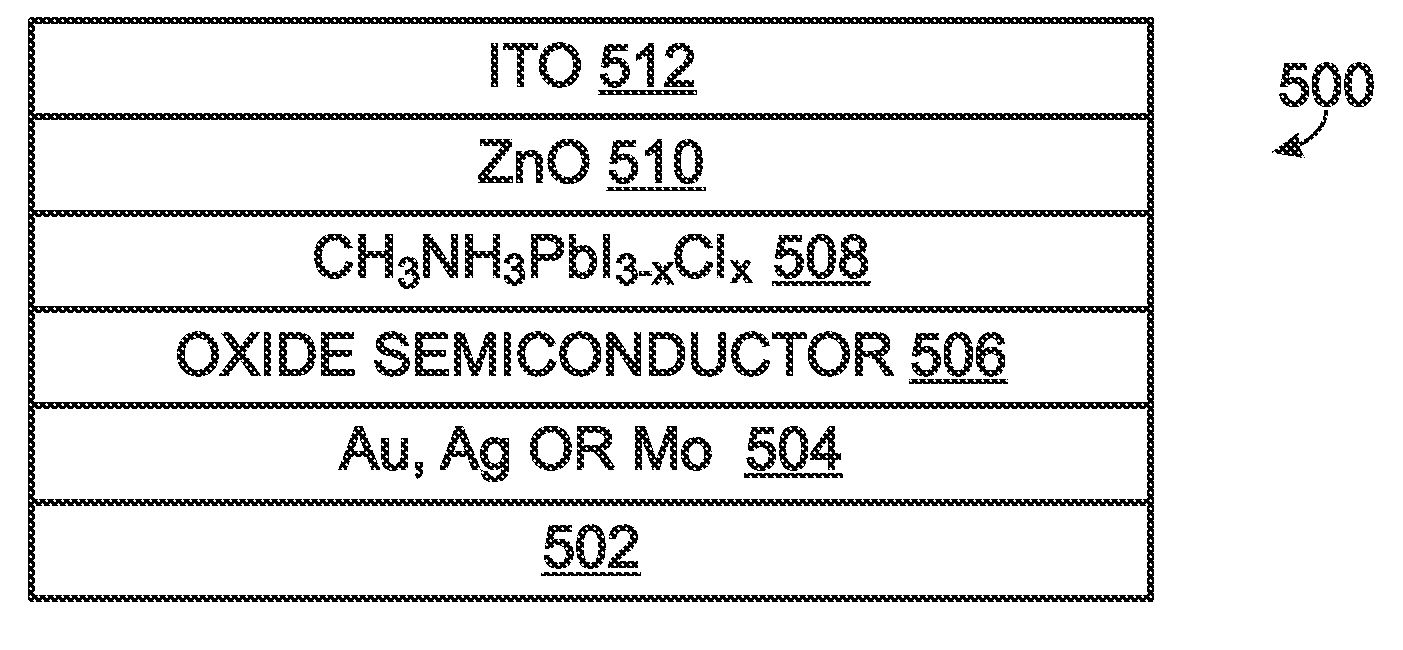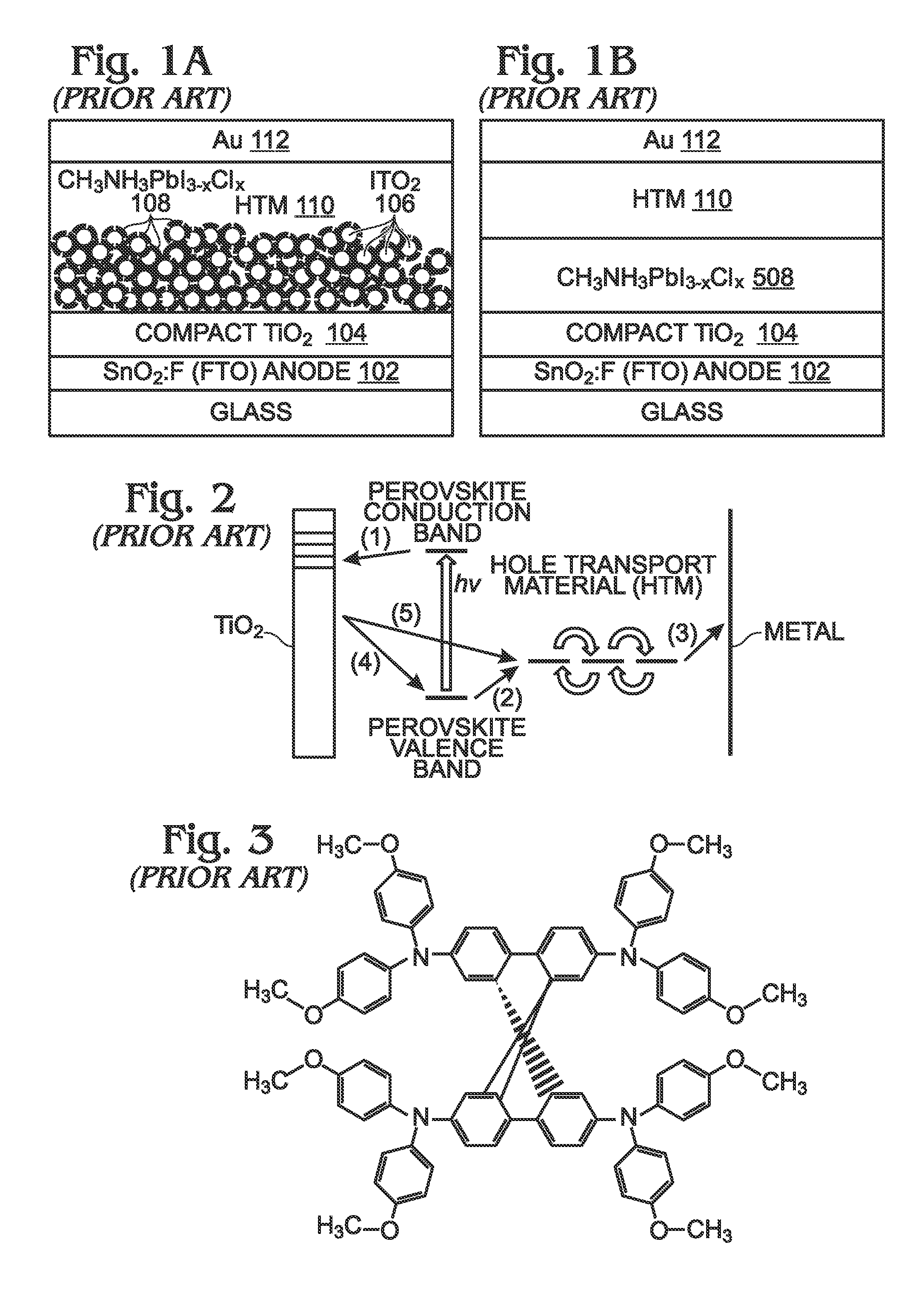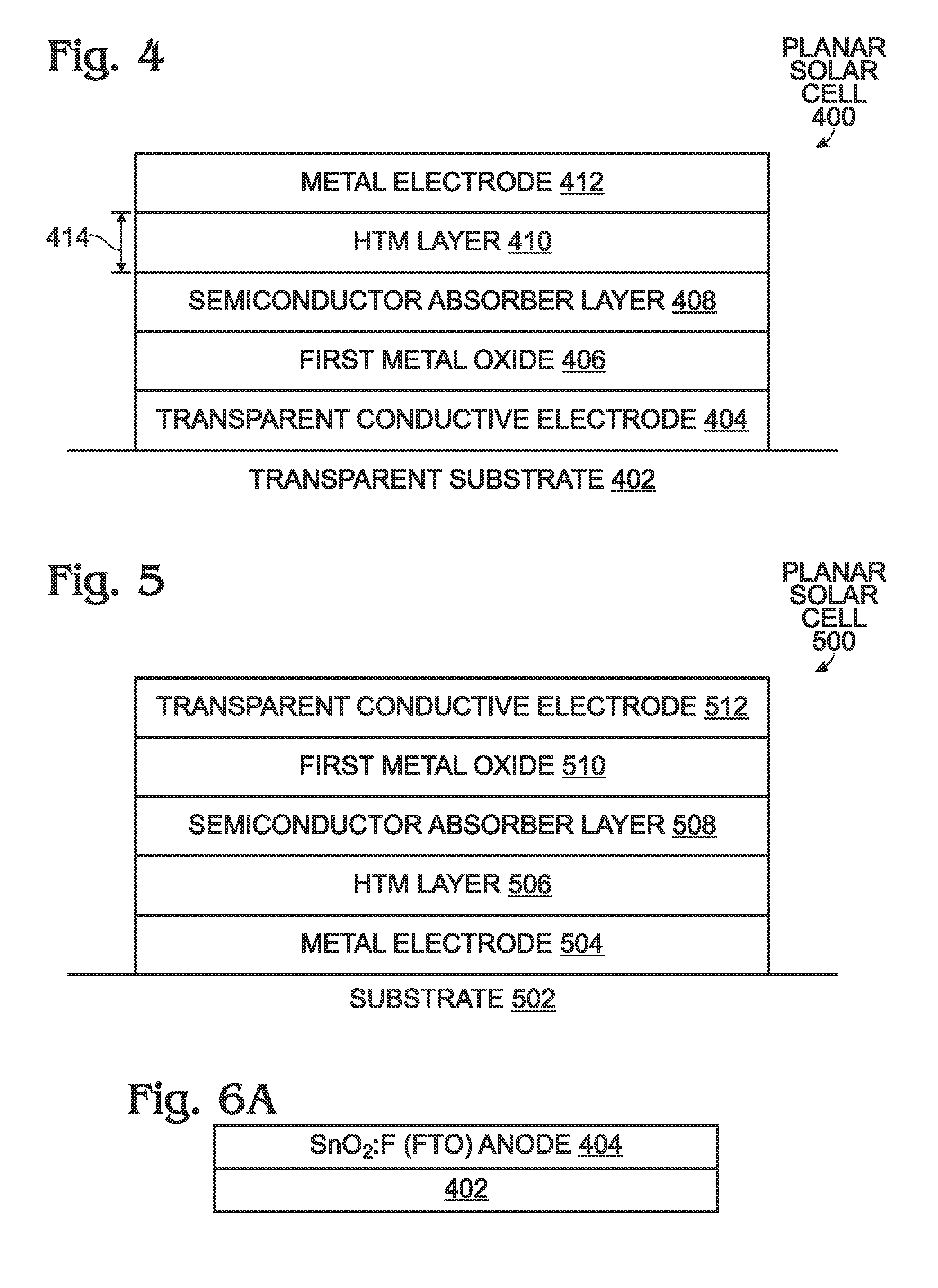Planar Structure Solar Cell with Inorganic Hole Transporting Material
- Summary
- Abstract
- Description
- Claims
- Application Information
AI Technical Summary
Benefits of technology
Problems solved by technology
Method used
Image
Examples
Embodiment Construction
[0026]FIG. 4 is a partial cross-sectional view of a planar structure solar cell. The solar cell 400 comprises a transparent substrate 402. Silica (glass), quartz, or a plastic may be used as the transparent substrate 402. A transparent conductive electrode 404 overlies the transparent substrate 402. Fluorine-doped tin oxide (SnO2:F) can be used as the transparent conductive electrode 404. Forms of graphene, indium. tin oxide (ITO), other conductive metal oxides, and single-walled carbon. nanotubes may also possibly be used as a transparent conductive electrode material. A planar layer of a first metal oxide 406 overlies the transparent conductive electrode 404. In one aspect, the first metal oxide 406 is an n-type metal oxide. Some examples of the first metal oxide 406 include titanium oxide MOO, tin oxide (SnO2), zinc oxide (ZnO), niobium oxide (Nb2O5), tantalum oxide (Ta2O5), barium titanate (BaTiO3), strontium titanate (SrTiO3), zinc titanate (ZnTiO3), and copper titanate (CuTiO3...
PUM
 Login to View More
Login to View More Abstract
Description
Claims
Application Information
 Login to View More
Login to View More - R&D
- Intellectual Property
- Life Sciences
- Materials
- Tech Scout
- Unparalleled Data Quality
- Higher Quality Content
- 60% Fewer Hallucinations
Browse by: Latest US Patents, China's latest patents, Technical Efficacy Thesaurus, Application Domain, Technology Topic, Popular Technical Reports.
© 2025 PatSnap. All rights reserved.Legal|Privacy policy|Modern Slavery Act Transparency Statement|Sitemap|About US| Contact US: help@patsnap.com



